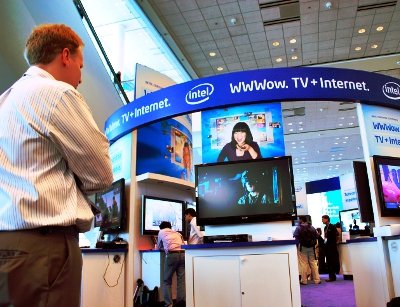Intel’s launch of its newest Xeon E5-2600 processors using the Sandy Bridge architecture on Tuesday included an expanded set of data center infrastructure management (DCIM) capabilities in its middleware Data Center Manager (DCM).
Jeff Klaus, director of data center solutions at Intel, said power management was one of the “three major pillars” of the new suite of CPUs and chipsets.
“The primary piece is that we will be adding additional [types] of power data that we’ll be providing,” Klaus said.
In the past, DCM only provided total server power draw, most of which was CPU power. The new generation of the middleware monitors memory power separately and feeds it to whatever DCIM tool the customer is using.
“We’ve broken out memory as another dimmer switch that you have access to,” Klaus said.
In addition to memory power monitoring, new DCM capabilities include monitoring of outlet air temperature. Until now, DCM has only monitored inlet air temperature.
Another new feature is aggregation of server serial numbers for asset-management features in DCIM tools, such as nlyte. Three major OEMs will expose their serial number data through DCM: HP, IBM and Dell.
Intel launched the Xeon E5-2600 family and announced a number of OEMs that have built products around the new platform. They are Cisco, IBM, Fujitsu, HP, Dell and Oracle.
Dell and HP have already announced server products built on the processor, and Cisco is expected to make its announcement later this week. For HP, it was the eighth generation of its ProLiant servers (Gen8), and for Dell it was the 12th generation of its PowerEdge servers.
Intel has expanded the range of devices DCM supports. Dell’s servers were the newest addition to the list of servers DCM supports.
“We’re essentially building Dell’s power management platform for them,” Klaus said. Dell is using Intel’s middleware, and the processor company is also doing programming for Dell’s power management user interface.
In addition to adding servers to the list of supported devices, Intel is expanding the number of data center infrastructure equipment supported by DCM, including UPS and intelligent PDU devices.
Finally, Intel is in discussions with OEMs that want it to extend DCM into storage and networking.
“They’re really looking at us to be the ingredient supplier in the aggregation layer really for any power in the data center,” Klaus said.

